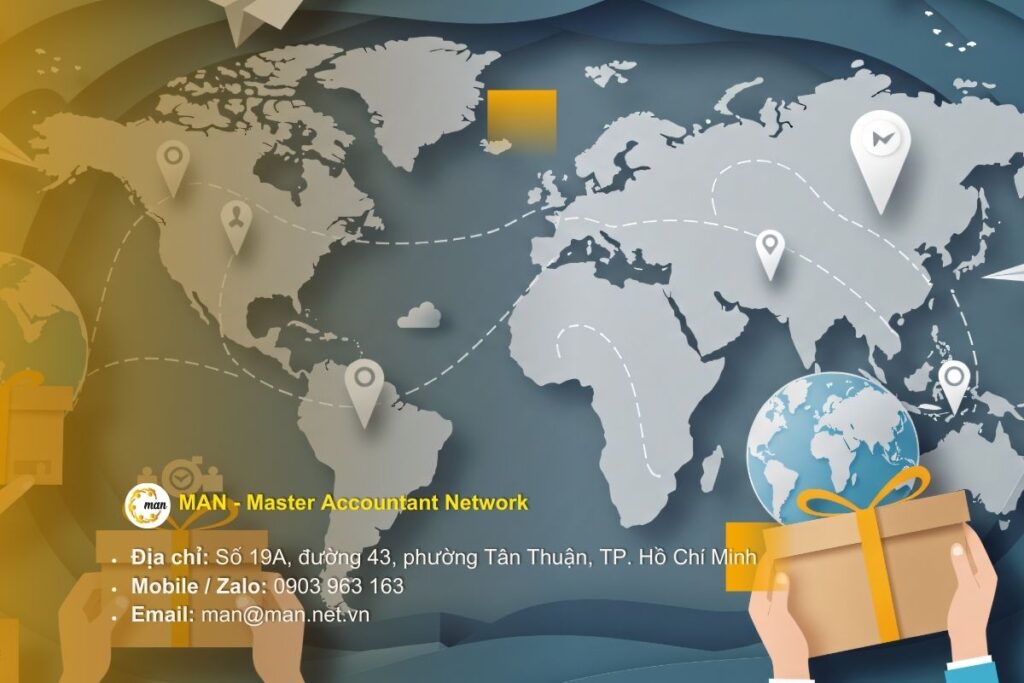The transaction structure in related party transactions is a key factor to help businesses optimize taxes and effectively manage tax risks. According to the report from the analysis from Vietnamnews, As of December 31, 2023, out of a total of 28,918 FDI enterprises, 16,292 enterprises reported losses, accounting for 56% of the total number of FDI enterprises in Vietnam.
The total loss of these enterprises reached VND217.46 trillion, an increase of VND32% compared to the previous year. Establishing a transparent transaction structure, combining internal transaction control and reasonable valuation methods not only helps enterprises comply with Vietnamese tax laws but also ensures transparency of cross-border transactions. This is an important foundation to reduce the risk of tax collection, improve management efficiency and optimize tax costs in inter-company transactions.
Concept of transaction structure in related party transactions
What is the transaction structure?
The transaction structure in related party transactions is the way a business organizes transactions between the parent company, branches and subsidiaries within the same group. The main objective of this structure is to ensure that internal transactions are recorded transparently, easily controlled and proven to comply with the arm's length principle.
A reasonable transaction structure helps businesses:
Identify material transactions that have a significant impact on profits.
Transparency of transaction flow between companies in the group.
Easily explain valuation methods to tax authorities during inspections or audits.
Role for business
Building and maintaining a transaction structure in related party transactions brings many practical benefits to businesses:
Support compliance with Vietnamese tax laws: Enterprises with complete and transparent records help reduce the risk of profit adjustment or unreasonable tax collection.
Reduced risk of tax arrears: When transactions are recorded in detail and valuation methods are applied appropriately, businesses reduce the possibility of disputes with tax authorities.
Enhanced cross-border transaction management: For multinational corporations, transaction structures help control internal transaction flows between the parent company and foreign subsidiaries or branches.
Illustrative example: A multinational corporation, by applying transparent transaction structures and detailed valuation records, avoided being charged $1 million by tax authorities, while demonstrating that the valuation methods applying the arm's length principle were reasonable.
Documents to prepare for tax optimization

Transfer pricing documents and related reports
To optimize corporate tax through transaction structure in related party transactions, preparing complete transfer pricing documents is an important factor. The necessary documents include:
Master File: Synthesizes corporate strategy, profit allocation and global affiliated transactions, reflecting the transaction structure within the corporation.
Local File: Details of domestic affiliate transactions, helping with transparency and compliance with Vietnamese tax laws.
IGF (Intercompany Global File): A record of cross-border transactions between companies in the group, ensuring that the transaction structure in related party transactions is accurately recorded.
Transfer pricing dossier and transfer pricing appendix (GDLK 01): Demonstrate that the valuation method correctly applies the arm's length principle.
Business information and transaction structuring strategy
In addition to transfer pricing documents, enterprises need to prepare overview information and transaction structure strategies in related party transactions to ensure that transactions are carried out properly:
Group structure, ownership structure and subsidiaries: Including domestic and foreign branches, creating a basis for tax authorities to assess the transaction structure in related party transactions.
Transaction structuring strategy and pricing method: Ensure transactions are executed at market prices, transparently and with clear basis.
Cross-border affiliate trading
For multinational corporations, cross-border related party transactions need to be fully and specifically recorded to properly reflect the transaction structure in the related party transaction:
List transactions of goods, services, and transfers of assets between the parent company and its subsidiaries or foreign branches.
Apply the arm's length principle to demonstrate fair and legal market prices.
Full record management helps businesses easily explain valuation methods to tax authorities and make transactions transparent, while strengthening the transaction structure in related-party transactions.
Tax optimization process based on transaction structure
Prepare for inspection
Before the tax authority conducts an inspection, the enterprise needs to carefully prepare all documents to minimize risks. This includes:
Review all records related to transactions within the group, assess risks of key transactions.
Make a list of documents to be provided to the tax authorities, ensuring that all information about the transaction structure in related party transactions is fully recorded.
Internal transaction control systems need to be reviewed to ensure that all contracts, invoices and pricing methods are transparent, helping businesses to be proactive when explaining to tax authorities.
During the inspection
When an audit takes place, the company needs to detail intercompany transactions and the transaction structuring strategy adopted.
Clearly explain the transfer pricing method, demonstrate that transactions comply with the arm's length principle.
Update records promptly if requested by tax authorities, helping to reduce the risk of profit adjustments or unreasonable tax collection.
This helps manage tax risks and strengthens transparency and rationality in the transaction structure of related-party transactions of enterprises.
After inspection
After completing the inspection, the business needs to:
Adjust records if errors are found in transactions or valuation methods.
Learn from experience and optimize transaction structure for the next reporting period, ensuring complete and transparent transfer pricing records.
This helps optimize transfer pricing protection, maintain legal compliance, and strengthen the transaction structure in related party transactions to reduce the risk of tax arrears in subsequent periods.
Common risks and precautions
Common mistakes
In the process of managing the transaction structure in related party transactions, some common errors can increase tax risks and affect control effectiveness. Enterprises often lack information about the group structure, making it difficult for tax authorities to assess the overall related party transactions. In addition, incomplete transaction details, lack of contracts, invoices or supporting documents, are also common causes of risks. In addition, non-standard valuation methods, which do not reflect the arm's length principle, can cause enterprises to be subject to tax adjustments or to recover profits. These errors emphasize the importance of managing tax risks and maintaining tight internal control over transactions.
How to optimize your profile
To minimize risks and protect transfer pricing documents, enterprises should combine Master File, Local File and IGF (Intercompany Global File) to ensure complete and transparent documents for related-party transactions. Continuous quality control of documents and updates when there are changes in transactions or legal regulations are essential. At the same time, applying the arm's length principle helps to prove that the price of related-party transactions is consistent with the market, while strengthening the transaction structure in related-party transactions. These measures help optimize the protection of transfer pricing documents, timely update according to the requirements of tax authorities and minimize tax risks for enterprises.
Legal regulations and international standards
Vietnam Tax Law
According to Vietnamese tax law, enterprises are responsible for preparing complete and transparent transfer pricing documents, especially for related-party transactions. Compliance with these regulations helps minimize the risk of profit adjustment or tax arrears. Actual statistics show that about 40% FDI enterprises in Vietnam have had their profits adjusted due to incomplete transfer pricing documents or inaccurate valuation methods. This emphasizes the importance of building a transparent and fully documented transaction structure in related-party transactions.
OECD standards
The OECD Transfer Pricing Standards provide detailed guidance on establishing Master File, Local File and IGF (Intercompany Global File). The global application of the arm's length principle helps businesses ensure that transaction prices between affiliated companies are consistent with the international market. Compliance with OECD standards not only supports the optimization of records but also enhances the optimization of transfer pricing protection, especially for cross-border transactions. The combination of Vietnamese tax law and OECD standards helps businesses maintain transparency in the transaction structure in related party transactions.
Comparison table of Vietnamese and OECD laws
The comparison table below helps businesses identify the differences and similarities between Vietnamese tax law and OECD standards, thereby building Transaction structure in related party transactions appropriate, transparent and compliant with both domestic and international regulations.
| Criteria | Vietnam Tax Law | OECD standards | Other Laws/Standards |
|---|---|---|---|
| Request Profile | Local File, Master File (for FDI enterprises or important related transactions) | Master File, Local File, Intercompany Global File (IGF) | International tax laws in the US and EU require reporting of intercompany transactions. |
| Scope of application | Vietnamese enterprises with domestic and cross-border related transactions | Global, focusing on cross-border transactions between affiliated companies | Multinational corporations, cross-border transactions |
| Pricing principles | Arm's length principle applied in Vietnam | Global arm's length principle, detailed guidance from OECD | Arm's length principle applies according to other international guidelines such as UN Practical Manual, EU Guidelines |
| Purpose | Ensure transparency, avoid illegal profit transfer | Transparency of cross-border transactions, protection of business interests and tax authorities | Legal tax optimization, international tax risk management |
Conclusion and recommendations
The transaction structure in related party transactions plays a key role in optimizing taxes and managing tax risks for businesses. A transparent and reasonable transaction structure helps businesses demonstrate the reasonableness of related party transactions, while supporting tax cost control, reducing the possibility of profit adjustment or unnecessary tax collection.
Compliance with Vietnamese tax laws and OECD standards is an important foundation for building a complete, accurate and transparent transfer pricing dossier. Enterprises should combine the establishment of Master File, Local File and Intercompany Global File (IGF), and regularly update the dossier to accurately reflect the reality of related-party transactions.
In addition, maintaining tight internal transaction control and applying measures to optimize transfer pricing records will help businesses minimize tax collection risks, protect their rights and improve tax management efficiency.
For detailed advice on preparing standard documents and optimizing transaction structures in related-party transactions, businesses can contact MAN – Master Accountant Network according to the information below:
- Address: No. 19A, Street 43, Tan Thuan Ward, Ho Chi Minh City
- Mobile / Zalo: 0903 963 163 – 0903 428 622
- E-mail: man@man.net.vn
MAN Editorial Board – Master Accountant Network




